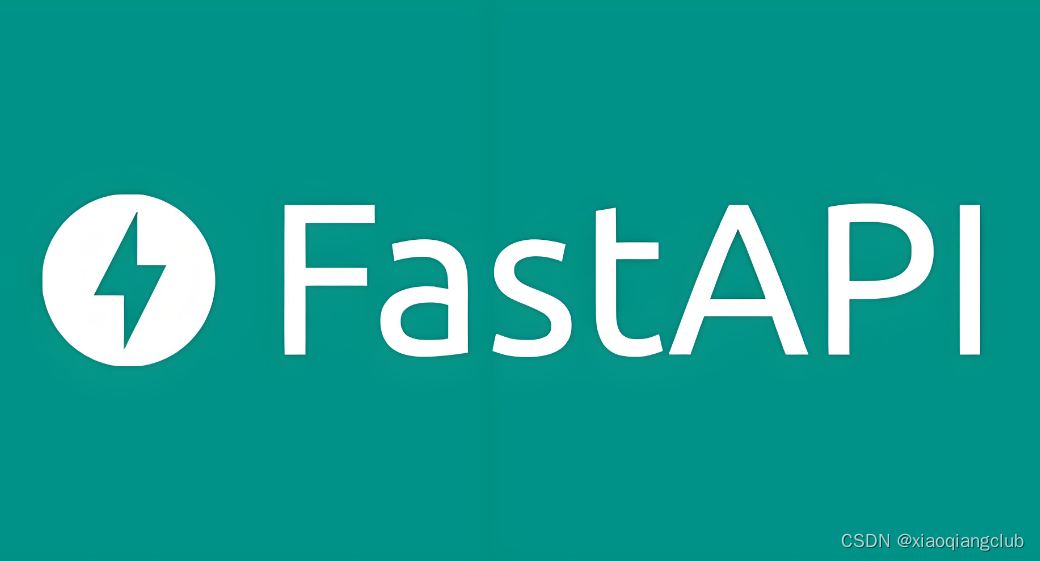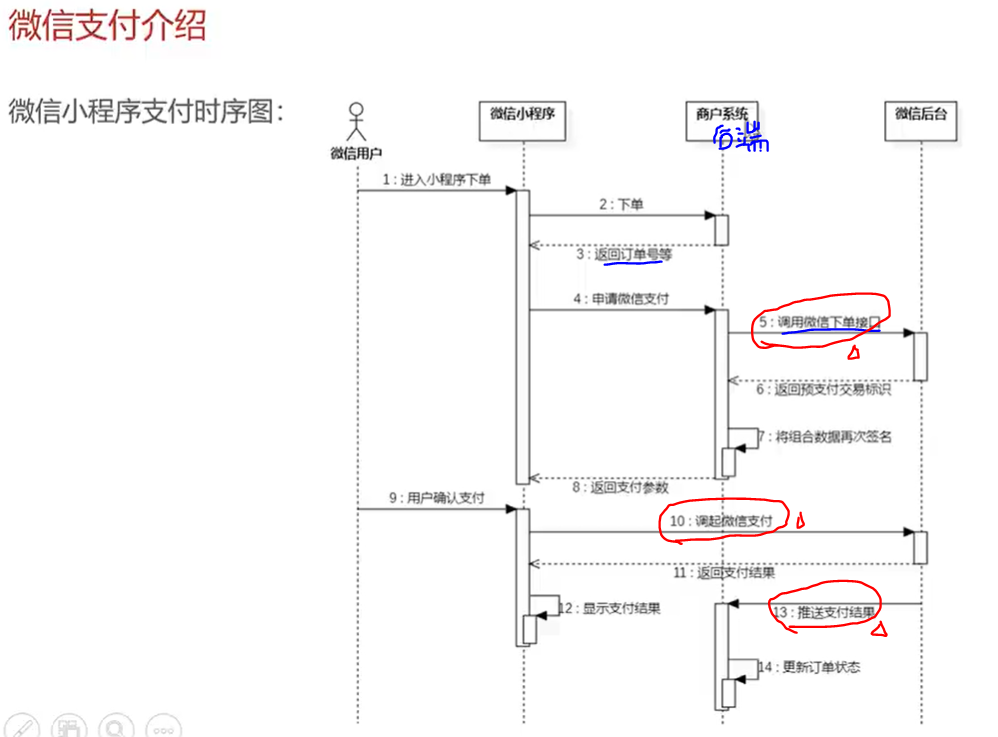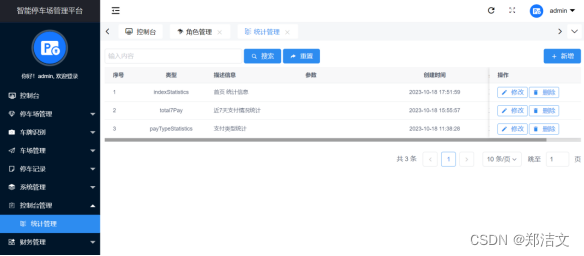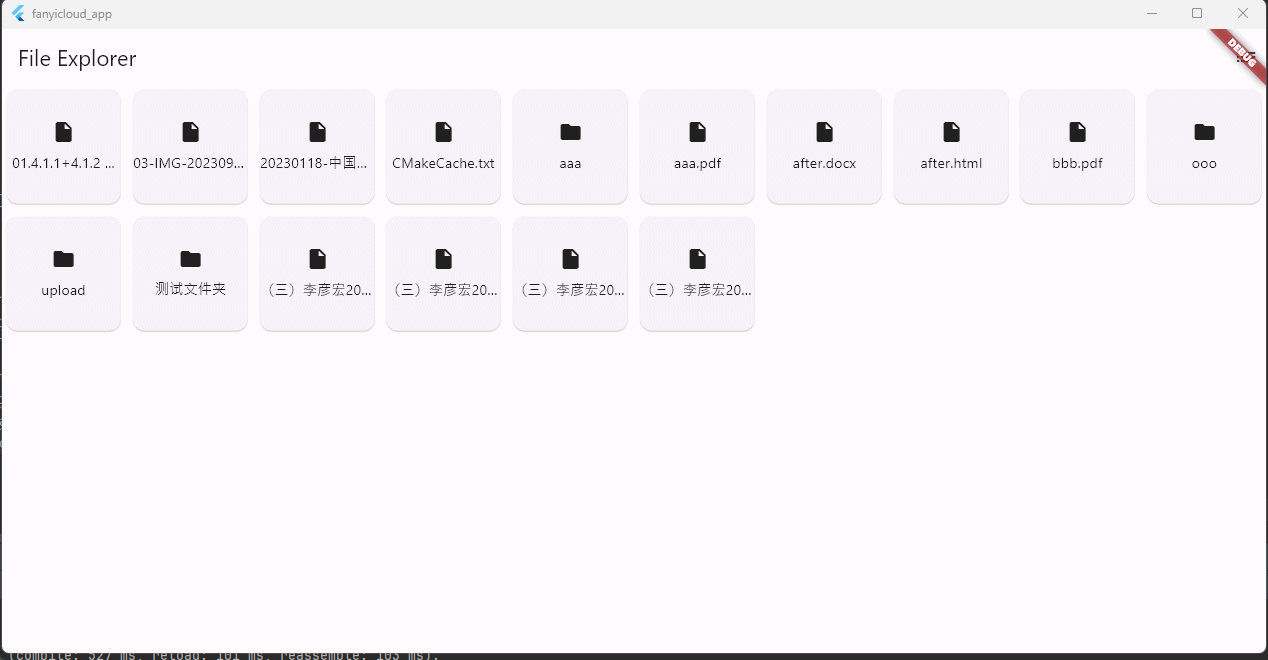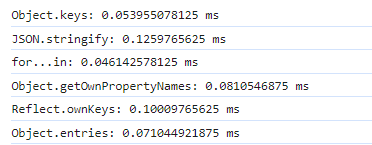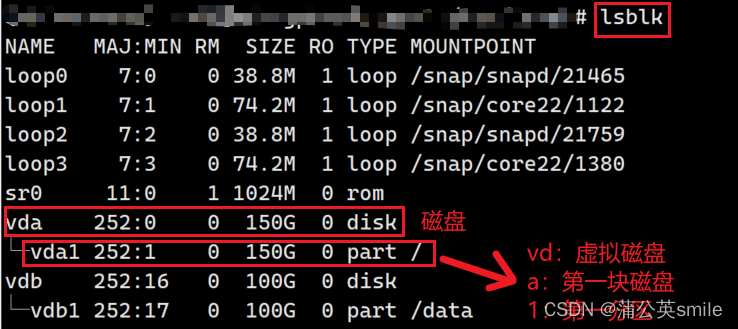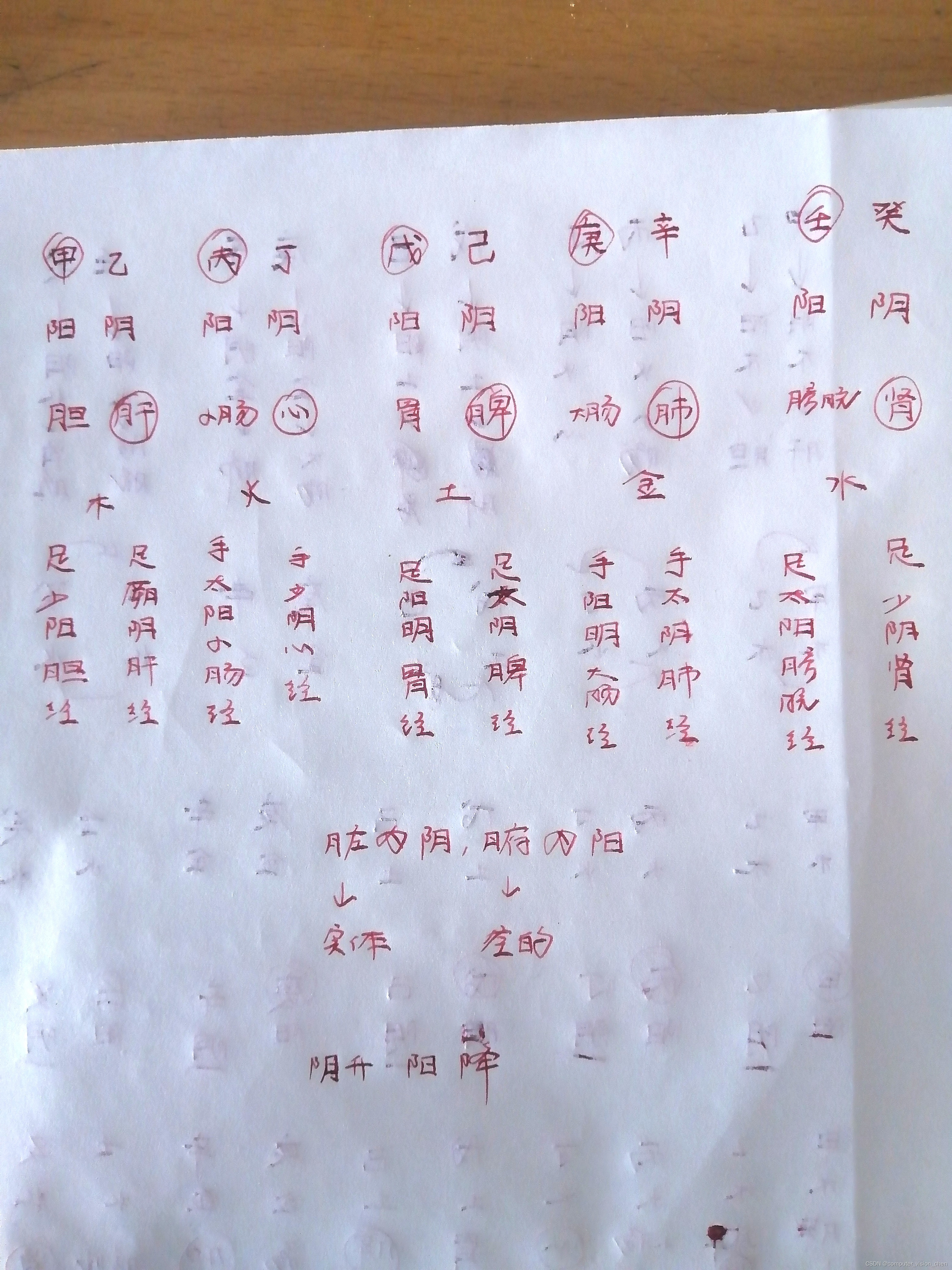内存分区模型
C++程序在执行时,将内存大方向划分为4个区域
- 代码区:存放函数体的二进制编码,由操作系统进行管理
- 全局区:存放全局变量和静态变量以及常量
- 栈区:由编译器自动分配释放,存放函数的参数值,局部变量等
- 堆区:由程序员分配和释放,若程序员不释放,程序结束时由操作系统回收
内存4区意义:
- 不同的区域存放不同的数据,赋予不同的生命周期,给我们更大的灵活编程
程序运行前
在程序编译后,生成了exe可执行程序,未执行该程序前分为两个区域
代码区
存放CPU执行的机器指令
代码区是共享的,共享的目的是对于频繁被执行的程序,只需要在内存中有一份代码即可
代码区是只读的,使其只读的原因是防止程序意外的修改了它的指令
全局区
全局变量和静态变量存放在此
全局区还包括了常量区,字符串常量和其他常量也存放在此
该区域的数据在程序结束之后由操作系统释放
示例:
int g_a = 10;
int g_b = 10;
const int c_g_a = 10;
const int c_g_b = 10;
int main(){
//局部变量不在全局区
int a = 10;
int b = 10;
cout << (int)&a << endl;
cout << (int)&a << endl;
cout << (int)&g_a << endl;
cout << (int)&g_b << endl;
static int s_a = 10;
static int s_b = 10;
cout << (int)&s_a << endl;
cout << (int)&s_b << endl;
cout << (int)&"hello world" << endl;
cout << (int)&"hello world1" << endl;
cout << (int)&c_g_a << endl;
cout << (int)&c_g_b << endl;
//局部常量不在全局区中
const int c_l_a = 10;
const int c_l_b = 10;
cout << (int)&c_l_a << endl;
cout << (int)&c_l_b << endl;
system("pause");
return 0;
}
程序运行后
栈区
由编译器自动释放,存放函数的参数值,局部变量等
注意事项:不要返回局部变量的地址,栈区开辟的数据由编译器自动释放
示例:
int * func(){
int a = 10;
return &a;
}
int main(){
int *p = func();
cout << *p << endl;
cout << *p << endl;
system("pause");
return 0;
}
注意:
x64函数的调用通常使用寄存器来传递参数和返回值,如果想要达到x86的效果,可以在两次输出之前输入system("pause")
堆区
由程序员分配释放,若程序员不能释放,程序结束时由操作系统回收
在C++中主要利用new在堆区开辟内存
示例:
int* func() {
int* a = new int(10);
return a;
}
int main() {
int* p = func();
cout << *p << endl;
cout << *p << endl;
system("pause");
return 0;
}
new操作符
C++中利用new操作符在堆区开辟数据
堆区开辟的数,由程序员手动开辟,手动释放,释放利用操作符delete
语法:new 数据类型
利用new创建的数据,会返回该数据对应的类型的指针
基本语法:
int* func() {
int* a = new int(10);
return a;
}
int main() {
int* p = func();
cout << *p << endl;
cout << *p << endl;
delete p;
system("pause");
return 0;
}
示例:
int main() {
int* arr = new int[10];
for (int i = 0; i < 10; i++) {
arr[i] = i + 100;
}
for (int i = 0; i < 10; i++) {
cout << arr[i] << endl;
}
delete[] arr;
system("pause");
return 0;
}
引用
引用的基本使用
作用:给变量起别名
语法:数据类型 &别名 = 原名
示例:
int main(){
int a = 10;
int &b = a;
cout << a << endl;
cout << b << endl;
b = 100;
cout << a << endl;
cout << b << endl;
system("pause");
return 0;
}
引用注意事项
- 引用必须初始化
- 引用在初始化后,不可以改变
示例:
int main(){
int a = 10;
int b = 20;
//错误,引用必须初始化
//int &c;
//一旦初始化后,就不可以改变
int &c = a;
//这是赋值操作,不是更改引用
c = b;
cout << a << endl;
cout << b << endl;
cout << c << endl;
system("pause");
return 0;
}
引用做函数参数
作用:函数传参时,可以利用引用的技术让形参修饰实参
优点:可以简化指针修改实参
示例:
void mySwap01(int a, int b) {
int temp = a;
a = b;
b = temp;
}
void mySwap02(int* a, int* b) {
int temp = *a;
*a = *b;
*b = temp;
}
void mySwap03(int& a, int& b) {
int temp = a;
a = b;
b = temp;
}
int main() {
int a = 10;
int b = 20;
mySwap01(a, b);
cout << a << endl;
cout << b << endl;
mySwap02(&a, &b);
cout << a << endl;
cout << b << endl;
mySwap03(a, b);
cout << a << endl;
cout << b << endl;
system("pause");
return 0;
}
引用做函数返回值
作用:引用是可以作为函数的返回值存在的
注意:不要返回局部变量引用
用法:函数调用作为左值
示例:
int& test01(){
int a = 10;
return a;
}
int& test02(){
static int a = 20;
return a;
}
int main(){
int& ref = test01();
cout << ref << endl;
cout << ref << endl;
int& ref2 = test02();
cout << ref2 << endl;
cout << ref2 << endl;
test02() = 1000;
cout << ref2 << endl;
cout << ref2 << endl;
system("pause");
return 0;
}
引用的本质
本质:引用的本质在c++内部实现是一个指针常量
示例:
void func(int& ref){
ref = 100;
}
int main(){
int a = 10;
int& ref = a;
ref = 20;
cout << a << endl;
cout << ref << endl;
func(a);
system("pause");
return 0;
}
常量引用
作用:常量引用主要用来修饰形参,防止误操作
在函数形参列表中,可以加const修饰形参,防止形参改变实参
示例:
void showValue(const int& v){
//v += 10;
cout << v << endl;
}
int main(){
//引用本身需要一个合法的内存空间,因此运行错误
//int& ref = 10;
//加入const就不会报错
const int& ref = 10;
cout << ref << endl;
int a = 10;
showValue(a);
system("pause");
return 0;
}
函数提高
函数默认参数
在C++中,函数的形参列表中的形参是可以由默认值的
语法:返回值类型 函数名(参数 = 默认值){}
示例:
int func(int a,int b = 10,int c = 10){
return a + b + c;
}
//如果某个位置参数有默认值,那么从这个位置往后,从左向右,必须都要有默认值
//如果函数声明有默认值,函数实现的时候就不能有默认参数
int func2(int a = 10,int b = 10);
int func2(int a,int b){
return a + b;
}
int main(){
cout << func(20,20) << endl;
cout << func(100) << endl;
system("pause");
return 0;
}
函数占位参数
C++中函数的形参列表里可以有占位参数,用来做占位,调用函数时必须填补该位置
语法:返回值类型 函数名(数据类型){}
在现阶段函数的占位参数存在意义不大,但是后面会用到该技术
示例:
void func(int a,int){
cout << "func" << endl;
}
int main(){
//占位符必须填补
func(10,10);
system("pause");
return 0;
}
函数重载
函数重载概述
作用:函数名可以使用,提高复用性
函数重载满足条件:
- 同一个作用于下
- 函数名称相同
- 函数参数类型不同 或者 个数不同 或者 顺序不同
注意:函数的返回值不可以作为函数重载的条件
示例:
void func(){
cout << "func" << endl;
}
void func(int a){
cout << "int a" << endl;
}
void func(double a){
cout << "double a" << endl;
}
void func(int a,double b){
cout << "double b" << endl;
}
void func(double a,int b){
cout << "int b" << endl;
}
//函数返回值不可以作为函数重载条件
/*int func(double a,int b){
cout << "double a" << endl;
}*/
int main(){
func();
func(10);
func(3.14);
func(10,3.14);
func(3.14,10);
system("pause");
return 0;
}
函数重载注意事项
- 引用作为重载条件
- 函数重载碰到函数默认参数
示例:
void func(int &a){
cout << "&a" << endl;
}
void func(const int &a){
cout << "const" << endl;
}
void func2(int a,int b = 10){
cout << "a,b = 10" << endl;
}
void func2(int a){
cout << "a" << endl;
}
int main(){
int a = 10;
//调用无const
func(a);
//调用有const
func(10);
//碰到默认参数产生歧义,需要避免
//func2(10);
system("pause");
return 0;
}
类和对象
C++面向对象的三大特性为:封装、继承、多态
C++认为万事万物皆为对象,对象上有其属性和行为
例如:
人可以作为对象,属性有姓名、年龄等,行为有走、跑等
车作为对象,属性有轮胎、方向盘等,行为有载人、放音乐等
具有相同性质的对象,可以抽象称为类
封装
封装的意义
封装是C++面向对象三大特性之一
封装的意义:
将属性和行为作为一个整体,表现生活中的事物
将属性和行为加以权限控制
封装的意义一:
在设计类的时候,属性和行为写在一起,表现事物
语法:class 类名{访问权限:属性/行为};
示例:设计一个圆类,求圆的周长
const double pi = 3.14;
class Circle{
public:
int m_r;
double calculate(){
return 2 * pi * m_r;
}
};
int main(){
Circle c1;
c1.m_r = 10;
cout << c1.calculate() << endl;
system("pause");
return 0;
}
封装意义二:
类在设计时,可以把属性和行为放在不同的权限下,加以控制
访问权限有三种:
1. public 公共权限
2. protected 保护权限
3. private 私有权限
示例:
class Person{
public:
string m_Name;
protected:
string m_Car;
private:
int m_Password;
public:
void func(){
m_Name = "张三";
m_Car = "汽车";
m_Password = 123456;
}
};
int main(){
Person p;
p.m_Name = "李四";
//在类外访问不到
//p.m_Car = "aodi";
//在类外访问不到
//p1.m_Password = 123;
p.func();
system("pause");
return 0;
}
struct 和 class 区别
在 C++ 中 struct 和 class 唯一的区别就在于默认的访问权限不同
区别:
- struct 默认权限为公共
- class 默认权限为私有
示例:
class C1{
int m_A;
};
struct C2{
int m_A;
};
int main(){
C1 c1;
c1.m_A = 10;
C2 c2;
c2.m_A = 10;
system("pause");
return 0;
}
成员属性设置为私有
优点1:将所有成员属性设置为私有,可以自己控制读写权限
优点2:对于写权限,可以检测数据的有效性
示例:
class Person{
public:
void SetName(string name){
m_Name = name;
}
string GetName(){
return m_Name;
}
int GetAge(){
return m_Age;
}
void SetAge(int age){
m_Age = age;
}
void SetIdol(string idol){
m_Idol = idol;
}
private:
string m_Name;
int m_Age = 18;
string m_Idol;
};
int main(){
Person p;
p.SetName("张三");
cout << p.GetName() << endl;
cout << p.GetAge() << endl;
p.SetIdol("小明");
system("pause");
return 0;
}
对象的初始化和清理
C++中的每个对象都会有初始设置以及对象销毁前的清理数据的设置
构造函数和析构函数
对象的初始化和清理也是两个非常重要的安全问题
一个对象或变量没有初始状态,对其使用后果是未知
同样的使用完一个对象或变量,没有及时清理,也会造成一定的安全问题
C++利用了构造函数和析构函数解决上述问题,这两个函数将会被连一起自动调用,完成对象初始化和清理工作
对象的初始化和清理工作是编译器强制要求做的事情,因此如果不提供构造和析构,编译器会提供编译器提供的构造函数和析构函数是空实现
构造函数:主要作用在于创建对象时为对象的成员属性赋值,构造函数由编译器自动调用,无需手动调用
析构函数:主要作用在于对象销毁前系统自动调用,执行一些工作
构造函数语法:类名(){}
构造函数没有返回值也不写void
函数名称和类名相同
构造函数可以有参数,因此可以发生重载
程序在调用对象时候会自动调用构造,无需手动调用,而且只会调用一次
析构函数语法:~类名(){}
析构函数,没有返回值也不写void
函数名称与类名相同,在名称前加上符号~
析构函数不可以有参数,因此不可以发生重载
程序在对象销毁前会自动调用析构,无需手动调用,而且只会调用一次
示例:
class Person{
public:
Person(){
cout << "构造函数" << endl;
}
~Person(){
cout << "析构函数" << endl;
}
};
void Test(){
Person p;
}
int main(){
Test();
system("pause");
return 0;
}
构造函数的分类和调用
两种分类方式:
按参数分为:有参构造和无参构造
按类型分为:普通构造和拷贝构造
三种调用方式:
括号法
显示法
隐式转换发
示例:
class Person{
public:
//无参(默认)构造函数
Person(){
cout << "无参构造函数" << endl;
}
//有参构造函数
Person(int a){
age = a;
cout << "有参构造函数" << endl;
}
//拷贝构造函数
Person(const Person& p){
age = p.age;
cout << "拷贝构造函数" << endl;
}
//析构函数
~Person(){
cout << "析构函数" << endl;
}
public:
int age;
};
void test01(){
Person p;
}
void test02(){
//括号法(常用)
Person p1(10);
//注意:调用无参构造函数不能加括号,如果加了编译器认为是一个函数声明
//Person p2();
//显式法
Person p2 = Person(10);
Person p3 = Person(p2);
//单独写就是匿名对象,当前行结束,马上析构
//Person(10);
//隐式转换法
Person p4 = 10;
Person p5 = p4;
//注意:不能利用拷贝构造函数,初始化匿名对象,编译器认为是对象声明
//Person p5(p4);
}
int main(){
test01();
test02();
system("pause");
return 0;
}
拷贝构造函数调用时机
C++中拷贝构造函数调用时机通常有三种情况
使用一个已经创建完毕的对象来初始化一个新对象
值传递的方式给函数参数传递
以值方式返回局部对象
示例:
class Person{
public:
Person(){
cout << "默认构造函数" << endl;
mAge = 0;
}
Person(int age){
cout << "有参构造函数" << endl;
mAge = age;
}
Person(const Person& p){
cout << "拷贝构造函数" << endl;
mAge = p.mAge;
}
~Person(){
cout << "析构函数" << endl;
}
int mAge;
};
void test01(){
Person p1(20);
Person p2(p1);
cout << p2.mAge << endl;
}
void doWork(Person p){
}
void test02(){
Person p;
doWork(p);
}
Person doWork2(){
Person p1;
return p1;
}
void test03(){
Person p = doWork2();
}
int main(){
test01();
test02();
test03();
system("pause");
return 0;
}
构造函数调用规则
默认情况下,C++编译器至少给一个类添加3个函数
默认构造函数(无参,函数体为空)
默认析构函数(无参,函数体为空)
默认拷贝构造函数,对属性值进行拷贝
构造函数调用规则如下:
如果用户定义有参构造函数,C++不在提供默认无参构造,但是会提供默认拷贝函数
如果用户定义拷贝构造函数,C++不会再提供其他构造函数
示例:
class Person{
public:
Person(){
cout << "默认构造函数" << endl;
}
Person(int a){
age = a;
cout << "有参构造函数" << endl;
}
Person(Person& p){
m_Age = p.m_Age;
cout << "拷贝构造函数" << endl;
}
~Person(){
cout << "析构函数" << endl;
}
int m_Age;
};
void test01(){
Person p;
p.m_Age = 18;
Person p2(p);
cout << p2.m_Age << endl;
}
void test02(){
Person p;
Person p2(18);
Person p3(p2);
cout << p3.m_Age << endl;
}
int main(){
test01();
test02();
system("pause");
return 0;
}
深拷贝与浅拷贝
浅拷贝:简单的赋值拷贝操作
深拷贝:在堆区重新申请空间、进行拷贝工作
class Person{
public:
Person(){
cout << "无参构造函数" << endl;
}
Person(int age,int height){
cout << "有参构造函数" << endl;
m_Age = age;
m_hight = new int(height);
}
Person(const Person& p){
cout << "拷贝构造函数" << endl;
m_Age = p.m_Age;
//深拷贝操作
m_height = new int(*p.m_height);
}
~Person(){
cout << "析构函数" << endl;
if(m_height != NULL){
delete m_height;
}
}
public:
int age;
int* m_height;
};
void test01(){
Person p1(10,100);
Person p2(p1);
cout << p1.m_Age << *p1.m_height << endl;
cout << p2.m_Age << *p2.m_height << endl;
}
int main(){
test01();
system("pause");
return 0;
}
如果属性在堆区开辟,一定要自己提供拷贝构造函数,防止浅拷贝带来的问题(堆区重复释放)
初始化列表
作用:
C++提供了初始化列表语法,用来初始化属性
语法:构造函数():属性1(值1),属性2(值2)...{}
示例:
class Person{
public:
// 传统方式初始化
/*
Person(int a,int b,int c){
m_A = a;
m_B = b;
m_C = c;
}
*/
//初始化列表初始化属性
Person(int a,int b,int c):m_A(a),m_B(b),m_C(c){
}
int m_A;
int m_B;
int m_C;
};
void test01(){
//Person p(10,20,30);
Person p(30,20,10);
cout << p.m_A << endl;
cout << p.m_B << endl;
cout << p.m_C << endl;
}
int main(){
test01();
system("pause");
return 0;
}
类对象作为类成员
C++中的类可以是另一个类的对象,将该对象称为对象成员
例如:
class A{}
class B{
A a;
}
B类中有对象A作为成员,A为对象成员
示例:
class Phone {
public:
Phone(string pName) {
cout << "phone" << endl;
m_PName = pName;
}
~Phone() {
cout << "phone ~" << endl;
}
string m_PName;
};
class Person {
public:
Person(string name, string pName) :m_Name(name), phone(pName){
cout << "Person" << endl;
}
~Person() {
cout << "Person ~" << endl;
}
string m_Name;
Phone phone;
};
void test01() {
Person p("张三", "Apple");
cout << p.m_Name << endl;
cout << p.phone.m_PName << endl;
}
int main() {
test01();
system("pause");
return 0;
}
总结:
当其他类对象作为本类成员,构造时候先构造类对象,再构造自身
析构的顺序与构造的相反
静态成员
静态成员就是在成员变量和成员函数前加上关键字static,称为静态成员
静态成员分为:
静态成员变量
所有对象共享的一份数据
在编译阶段分配内存
类内生命,类外初始化
静态成员函数
所有对象共享同一个函数
静态成员函数只能访问静态成员变量
class Person{
public:
static int m_A;
};
int Person::m_A = 100;
void test01(){
Person p;
cout << p.m_A << endl;
Person p2;
p.m_A = 200;
//输出的值为200,所以说明所有对象共享同一个数据
cout << p.m_A << endl;
}
void test02(){
/*Person p;
cout << p.m_A << endl;
*/
cout << Person::m_A << endl;
}
int main(){
test01();
system("pause");
return 0;
}
示例:
class Person{
public:
static void func(){
cout << "func" << endl;
}
static int m_A;
int m_B;
private:
static void func2(){
cout << "func2" << endl;
}
};
int Person::m_A = 10;
void test01(){
Person p1;
p1.func();
Person::func();
//访问不到
//Person::func2();
}
int main(){
test01();
system("pause");
return 0;
}
C++对象模型和this指针
成员变量和成员函数分开存储
在C++中,类内的成员变量和成员函数分开存储
只有非静态成员变量才属于类的对象上
示例:
class Person{
public:
int m_A;
static int m_B;
void func(){}
static void func2(){}
};
int Person::m_B = 0;
void test01(){
Person p;
cout << sizeof(p) << endl;
}
void test02(){
Person p;
cout << sizeof(p) << endl;
}
int main(){
system("pause");
return 0;
}
总结:
空对象占用内存空间为1
C++编译器会给每个空对象也分配一个空间,时为了区分空对象占内存的情况
每个空对象也应该有一个独一无二的内存地址
this指针概念
C++通过提供特殊的对象指针,this指针,解决区分某个对象调用自己,this指向被调用的成员函数所属的对象
this指针是隐含每一个非静态成员函数内的一种指针
this指针不需要定义,直接使用即可
this指针的用途:
当形参和成员变量同名时,可用 this 指针来区分
在类的非静态成员函数中返回对象本身,可使用 return *this
示例:
class Person{
public:
Person(int age){
this -> age = age;
}
Person& PersonAddAge(Person &p){
this -> age +=p.age;
return *this;
}
int age;
};
void test01(){
Person p1(18);
cout << p1.age << endl;
}
void test02(){
Person p1(10);
Person p2(10);
p2.PersonAddAge(p1).PersonAddAge(p1);
cout << p2.age << endl;
}
int main(){
test01();
test02();
system("pause");
return 0;
}
空指针访问成员函数
C++中空指针也是可以调用成员函数的,但是也要注意有没有用到 this 指针
如果用到 this 指针,需要加以判断保证代码的健壮性
示例:
class Person {
public:
void showClassName() {
cout << "Person" << endl;
}
void showPersonAge() {
if (this == NULL) {
return;
}
cout << m_Age << endl;
}
int m_Age;
};
void test01() {
Person* p = NULL;
p->showClassName();
//报错,因为传入的指针为空
//p -> showPersonAge();
}
int main() {
test01();
system("pause");
return 0;
}
const修饰成员函数
常函数:
成员函数后加const后称这个数为常函数
常函数内不可以修改成员属性
成员属性声明时加关键字 muteble 后,在常函数中依旧可以修改
常对象:
声明对象前加const称该对象为常对象
常对象只能调用常函数
示例:
class Person{
public:
void showPerson() const{
//this -> m_A = 100;
this -> m_B = 100;
}
int m_A;
mutable int m_B;
void func(){}
};
void test01(){
Person p;
p.showPerson();
}
void test02(){
const Person p;
//p.m_A = 100;
p.m_B = 100;
//p.func();
}
int main(){
test01();
test02();
system("pause");
return 0;
}
总结:
this指针的本质是指针常量,指针的指向是不可以修改的
this指针不可以修改指针的指向的
在成员函数后面加const,修饰的是this指向,让指针指向的值也不可以修改
加关键字mutable的特殊变量,即使在常函数中,也可以修改这个值
加了muteble的特殊变量,在常对象下也可以修改
常对象只能调用常函数,不可以调用普通成员函数,因为普通成员函数可以修改属性
友元
在程序里,有些私有属性想让类外特殊的一些函数或者类进行访问,就需要用到友元的技术
友元的目的就是让一个函数或者类访问另一个类中私有成员
友元的关键字为 friend
友元的三种实现
全局函数做友元
类做友元
成员函数做友元
全局函数做友元
class Building {
//goodGay可以访问Building中的私有成员
friend void goodGay(Building& building);
public:
string m_SittingRoom;
Building() {
m_SittingRoom = "客厅";
m_BedRoom = "卧室";
}
private:
string m_BedRoom;
};
void goodGay(Building& building) {
cout << building.m_SittingRoom << endl;
cout << building.m_BedRoom << endl;
}
void test01() {
Building building;
goodGay(building);
}
int main() {
test01();
system("pause");
return 0;
}
类做友元
class Building;
class Building {
//GoodGay可以访问本类中的私有成员
friend class GoodGay;
public:
Building();
string m_SittingRoom;
private:
string m_BedRoom;
};
class GoodGay {
public:
GoodGay();
void visit();
Building* building;
};
void GoodGay::visit() {
cout << building->m_SittingRoom << endl;
cout << building->m_BedRoom << endl;
}
Building::Building() {
m_SittingRoom = "客厅";
m_BedRoom = "卧室";
}
GoodGay::GoodGay() {
building = new Building;
}
void test01() {
GoodGay gg;
gg.visit();
}
int main() {
test01();
system("pause");
return 0;
}
成员函数做友元
class Building;
class GoodGay {
public:
GoodGay();
//让visit函数可以访问私有成员
void visit();
void visit2();
private:
Building* building;
};
class Building {
//告诉编译器,GoodGay下的visit成员函数作为本类的友元,可以访问私有的成员
friend void GoodGay::visit();
public:
Building();
string m_SittingRoom;
private:
string m_BedRoom;
};
Building::Building() {
m_SittingRoom = "客厅";
m_BedRoom = "卧室";
}
GoodGay::GoodGay() {
building = new Building;
}
void GoodGay::visit() {
cout << building->m_SittingRoom << endl;
cout << building->m_BedRoom << endl;
}
void GoodGay::visit2(){
cout << building -> m_SittingRoom << endl;
//cout << building -> m_BedRoom << endl;
}
void test01() {
GoodGay gg;
gg.visit();
}
int main() {
test01();
system("pause");
return 0;
}
运算符重载
运算符重载概念:对已有的运算符重新进行定义,赋予其另一种功能,以适应不同的数据类型
加号运算符重载
作用:实现两个自定义数据类型相加的运算
注意:
对于内置的数据类型的表达式的运算符是不可以改变的
不能滥用运算符重载
#include <iostream>
using namespace std;
class Person {
public:
//成员函数重载+
/*Person operator+(Person& p) {
Person temp;
temp.m_A = this->m_A + p.m_A;
temp.m_B = this->m_B + p.m_B;
return temp;
}*/
int m_A;
int m_B;
};
Person operator+(Person& p1, Person& p2) {
Person temp;
temp.m_A = p1.m_A + p2.m_B;
temp.m_B = p1.m_B + p2.m_B;
return temp;
}
Person operator+(Person& p1, int a) {
Person temp;
temp.m_A = p1.m_A + a;
temp.m_B = p1.m_B + a;
return temp;
}
void test01() {
Person p1;
p1.m_A = 10;
p1.m_B = 10;
Person p2;
p2.m_A = 10;
p2.m_B = 10;
Person p3 = p1 + p2;
Person p4 = p1 + 100;
cout << p3.m_A << endl;
cout << p3.m_B << endl;
cout << p4.m_A << endl;
cout << p4.m_B << endl;
}
int main() {
test01();
system("pause");
return 0;
}
左移运算符重载
作用:可以输出自定义数据类型
重载左移运算符配合友元可以实现输出自定义数据类型
#include <iostream>
using namespace std;
class Person {
friend ostream& operator<<(ostream& cout, Person p);
public:
Person(int a, int b) {
m_A = a;
m_B = b;
}
private:
int m_A;
int m_B;
};
ostream& operator<< (ostream& cout, Person p) {
cout << p.m_A << endl;
cout << p.m_B << endl;
return cout;
}
void test01() {
Person p(10,10);
cout << p << endl;
}
int main() {
test01();
system("pause");
return 0;
}
递增运算符重载
通过重载递增运算符,实现自己的整型数据
#include <iostream>
using namespace std;
class MyInteger {
friend ostream& operator<< (ostream& cout, MyInteger myint);
public:
MyInteger() {
m_Num = 0;
}
//重载前置++运算符
//返回引用是为了一直对一个数据进行递增操作
MyInteger& operator++() {
m_Num++;
return *this;
}
//重载后置++运算符
//参数中的占位参数int可以作为区分前置和后置递增
MyInteger operator++(int) {
MyInteger temp = *this;
m_Num++;
return temp;
}
private:
int m_Num;
};
ostream& operator<< (ostream & cout, MyInteger myint) {
cout << myint.m_Num;
return cout;
}
void test01() {
MyInteger myint;
cout << ++myint << endl;
}
void test02() {
MyInteger myint;
cout << myint++ << endl;
cout << myint << endl;
}
int main() {
test01();
test02();
system("pause");
return 0;
}
赋值运算符重载
C++编译器至少给一个类添加4个函数
1.默认构造函数(无参,函数体为空)
2.默认析构函数(无参,函数体为空)
3.默认拷贝构造函数,对属性进行值拷贝
4.赋值运算符 operator=,对属性进行值拷贝
如果类中有属性指向堆区,做复制操作时也会出现深浅拷贝问题
#include <iostream>
using namespace std;
class Person {
public:
Person(int age) {
m_Age = new int(age);
}
int* m_Age;
~Person() {
if (m_Age != NULL) {
delete m_Age;
m_Age = NULL;
}
}
Person& operator=(Person& p) {
if (m_Age != NULL) {
delete m_Age;
m_Age = NULL;
}
m_Age = new int(*p.m_Age);
return *this;
}
};
void test01() {
Person p1(16);
Person p2(20);
Person p3(30);
p3 = p2 = p1;
cout << *p1.m_Age << endl;
cout << *p2.m_Age << endl;
cout << *p3.m_Age << endl;
}
int main() {
test01();
system("pause");
return 0;
}
关系运算符重载
作用:重载关系运算符,可以让两个自定义类型对象进行对比操作
示例:
#include <iostream>
using namespace std;
class Person {
public:
Person(string name, int age) {
this->age = age;
this->name = name;
}
bool operator==(Person& p) {
if (this->age == p.age && this->name == p.name) {
return true;
}
return false;
}
string name;
int age;
};
void test01() {
Person p1("Tom", 12);
Person p2("Tom", 12);
cout << (p1 == p2) << endl;
}
int main() {
test01();
system("pause");
return 0;
}
函数调用运算符重载
- 函数调用运算符()也可以重载
- 由于重载后使用的方式非常像函数的调用,因此成为仿函数
- 仿函数没有固定方法,非常灵活
示例
#include<iostream>;
using namespace std;
class MyPrint {
public:
void operator()(string test) {
cout << test << endl;
}
};
void test01() {
MyPrint myprint;
//由于使用起来类似于函数调用,因此成为仿函数
myprint("helloWorld");
}
class MyAdd {
public:
int operator()(int num1, int num2) {
return num1 + num2;
}
};
void test02() {
MyAdd myAdd;
int res = myAdd(1, 2);
cout << res << endl;
}
int main() {
test01();
test02();
system("pause");
return 0;
}
继承
继承是面向对象三大特征之一
继承的基本语法
继承的优点:减少重复代码
语法:class 子类 : public 父类
子类也被称为派生类
父类也被称为基类
派生类中的成员,包含两大部分:
- 一类是从基类继承过来的,一类是自己增加的成员
- 从基类继承过来的表现其共性,而新增的成员体现了其个性
示例:
#include<iostream>;
using namespace std;
class BasePage {
public:
void header() {
cout << "这是网页头部" << endl;
}
void footer() {
cout << "这是网页底部" << endl;
}
void left() {
cout << "这是网页左侧边框展示" << endl;
}
};
class Java : public BasePage {
public:
void content() {
cout << "Java学科视频" << endl;
}
};
class Python : public BasePage {
public:
void content() {
cout << "Python学科视频" << endl;
}
};
class Cpp : public BasePage {
public:
void content() {
cout << "C++学科视频" << endl;
}
};
void test01() {
cout << "Java如下" << endl;
Java ja;
ja.content();
ja.footer();
ja.header();
ja.left();
cout << "------------------" << endl;
cout << "Python如下" << endl;
Python py;
py.content();
py.footer();
py.header();
py.left();
cout << "------------------" << endl;
cout << "C++如下" << endl;
Cpp cpp;
cpp.content();
cpp.footer();
cpp.header();
cpp.left();
}
int main() {
test01();
system("pause");
return 0;
}
继承方式
继承的语法:class 子类 : 继承方式 父类
继承方式一共有三种:
- 公共继承
- 保护继承
- 私有继承

示例:
#include <iostream>
using namespace std;
class Base1 {
public:
int m_A;
protected:
int m_B;
private:
int m_C;
};
class Son1 : public Base1 {
public:
void func() {
//父类中的公共权限成员 到子类中依然是公共权限
m_A = 10;
//父类中的保护权限成员 到子类中依然是保护权限
m_B = 20;
//父类中的四有权限成员 子类访问不到
//m_C = 30;
}
};
void test01() {
Son1 s1;
s1.m_A = 100;
//由于是保护权限,所以类外访问不到这个成员
//s1.m_B = 100;
}
class Son2 : protected Base1 {
public:
void func() {
m_A = 100;
m_B = 100;
//私有权限依旧访问不到
//m_C = 100;
}
};
void test02() {
Son2 son2;
//protected继承方式将父类中的public权限的变量转换成了protected权限,无法类外访问
//son2.m_A;
//son2.m_B;
}
class Son3 : private Base1 {
public:
void func() {
m_A = 10;
m_B = 10;
//依旧无法访问到私有权限成员变量
//m_C = 10;
}
};
void test03() {
//private继承方式将父类中的成员都变成了private权限,无法在外部访问
//m_A = 1;
//m_B = 2;
}
继承中的对象模型
问题:从父类继承过来的成员,哪些属于子类对象?
父类中私有成员也被子类继承了,只是由编译器给隐藏后访问不到
示例:
#include <iostream>;
using namespace std;
class Base {
public:
int m_A;
protected:
int m_B;
private:
int m_C;
};
class Son : public Base {
public:
int m_D;
};
//利用开发人员命令提示工具查看对象模型
//跳转盘符 F:
//跳转文件路径 cd 具体路径
//查看命名
//cl /d1 reportSingleClassLayout类名 文件名
void test01() {
cout << "size of Son = " << sizeof(Son) << endl;
}
int main() {
test01();
system("pause");
return 0;
}
继承中构造和析构顺序
子类继承父类后,当创建子类对象,也会调用父类对象中的构造函数
问题:父类和子类的构造函数谁先调用?
顺序如下:
- 先构造父类,再构造子类
- 析构的顺序与构造的顺序相反
示例:
#include<iostream>;
using namespace std;
class Base {
public:
Base() {
cout << "Base构造函数" << endl;
}
~Base() {
cout << "Base析构函数" << endl;
}
};
class Son : public Base {
public:
Son() {
cout << "Son构造函数" << endl;
}
~Son() {
cout << "Son析构函数" << endl;
}
};
void test01() {
Son son;
}
int main() {
test01();
system("pause");
return 0;
}
继承同名成员处理方式
问题:当子类成员与父类出现同名的成员,如何通过子类对象,访问到子类或父类中同名的数据?
- 访问子类同名成员 直接访问即可
- 访问父类同名成员 需要加作用域
- 子类对象可以直接访问到子类中同名成员
- 子类对象加作用域可以访问到父类同名成员
- 当子类和父类拥有同名的成员函数,子类会隐藏掉父类中同名成员函数,加作用域可以访问到父类中同名函数
示例:
#include<iostream>
using namespace std;
class Base {
public:
Base() {
m_A = 100;
}
void func() {
cout << "Base调用" << endl;
}
int m_A;
};
class Son : public Base {
public:
Son() {
m_A = 200;
}
void func() {
cout << "Son调用" << endl;
}
int m_A;
};
void test01() {
Son s;
cout << s.m_A << endl;
//如果通过子类对象访问到父类中的同名成员,需要加作用域
cout << s.Base::m_A << endl;
}
void test02() {
Son s;
s.func();
s.Base::func();
}
int main() {
test01();
test02();
return 0;
}
继承同名静态成员处理方式
问题:继承中同名的静态成员在子类对象上如何进行访问?
静态成员和非静态成员出现同名,处理方式一致:
- 访问子类同名成员 直接访问即可
- 访问父类同名成员 需要加作用域
同名静态成员处理方式和非静态处理方式一样,只不过有两种访问方式(通过对象和通过类名)
示例:
#include<iostream>;
using namespace std;
class Base {
public:
static int m_A;
static void func() {
cout << "Base静态" << endl;
}
};
int Base::m_A = 100;
class Son : public Base {
public:
static int m_A;
static void func() {
cout << "Son静态" << endl;
}
};
int Son::m_A = 200;
void test01() {
//通过对象访问
Son s;
cout << s.m_A << endl;
cout << s.Base::m_A << endl;
//通过类名访问
cout << Son::m_A << endl;
cout << Son::Base::m_A << endl;
}
void test02() {
//通过对象访问
Son s;
s.func();
s.Base::func();
//通过类名访问
Son::func();
Son::Base::func();
}
int main() {
test01();
test02();
return 0;
}
多继承语法
C++允许一个类继承多个类
语法:class 子类 : 继承方式 父类1,继承方式 父类2...
多继承可能会引发父类中有同名成员出现,需要加作用域区分
C++实际开发中不建议用多继承
示例:
#include<iostream>;
using namespace std;
class Base1 {
public:
Base1() {
m_A = 1;
}
int m_A;
};
class Base2 {
public:
Base2() {
m_B = 2;
}
int m_B;
};
class Son : public Base1, public Base2 {
public:
Son() {
m_C = 3;
m_D = 4;
}
int m_C;
int m_D;
};
void test01() {
Son s;
cout << sizeof(s) << endl;
cout << s.Base1::m_A << endl;
cout << s.Base2::m_B << endl;
}
int main() {
test01();
return 0;
}
菱形继承
菱形继承概念
- 两个派生类继承同一个基类
- 又有某个类同时继承两个派生类
- 这种继承被称为菱形继承,或者钻石继承
案例:

分析案例中出现的问题
- 羊继承了动物的数据,驼同样继承了动物的数据,当羊驼使用数据时,会产生二义性
- 羊驼继承自动物的数据变成了两份,其实一份即可
示例:
#include<iostream>;
using namespace std;
class Animal{
public:
int m_Age;
};
//因为菱形继承导致数据有两份,资源浪费
//利用虚继承 加上关键字 virtual 变为虚继承
//Animal类称为 虚基类
class Sheep : virtual public Animal {
};
class Tuo : virtual public Animal{};
class SheepTuo : public Sheep,public Tuo{};
void test01() {
SheepTuo st;
st.Sheep::m_Age = 10;
st.Tuo::m_Age = 11;
//当菱形继承,两个父类拥有相同数据,需要加以作用域区分
cout << st.Sheep::m_Age << endl;
cout << st.Tuo::m_Age << endl;
cout << st.m_Age << endl;
}
int main() {
test01();
return 0;
}
多态
多态的基本概念
多态是C++面向对象三大特性之一
多态分为两类
静态多态:函数重载和运算符重载属于静态多态,复用函数名
动态多态:派生类和虚函数实现运行时多态
静态多态和动态多态区别:
静态多态的函数地址早绑定 - 编译阶段确定函数地址
动态多态的函数地址晚绑定 - 运行阶段确定函数地址
动态多态满足条件:
有继承关系
子类重写父类的虚函数
动态多态使用:
父类的指针或引用指向子类对象
重写:函数返回值类型 函数名 参数列表完全一致成为重写
示例:
#include<iostream>;
using namespace std;
class Animal {
public:
virtual void speak() {
cout << "说话" << endl;
}
};
class Cat : public Animal {
public:
void speak() {
cout << "猫说话" << endl;
}
};
class Dog :public Animal {
public:
void speak() {
cout << "狗说话" << endl;
}
};
//地址早绑定 在编译阶段确定函数地址
//如果想让猫说话 那么这个函数地址就不能提前绑定 需要在运行阶段进行绑定 地址晚绑定
void doSpeak(Animal &animal) {
animal.speak();
}
void test01() {
Cat cat;
doSpeak(cat);
Dog dog;
doSpeak(dog);
}
int main() {
test01();
return 0;
}
多态案例一:计算器类
案例描述:
分别利用普通写法和多态技术,设计实现两个操作数进行运算的计算机类
多态的优点:
代码组织结构清晰
可读性强
利于前期和后期的拓展和维护
示例:
#include<iostream>;
using namespace std;
class Caculator {
public:
int getResult(string oper) {
if (oper == "+") {
return num1 + num2;
}
else if (oper == "-") {
return num1 - num2;
}
else if (oper == "*") {
return num1 * num2;
}
}
int num1;
int num2;
};
void test01() {
Caculator c;
c.num1 = 1;
c.num2 = 2;
cout << c.getResult("+") << endl;
cout << c.getResult("-") << endl;
cout << c.getResult("*") << endl;
}
class AbstractCalculator {
public:
virtual int getResult() {
return 0;
}
int num1;
int num2;
};
class AddCalculator : public AbstractCalculator {
public:
int getResult() {
return num1 + num2;
}
};
class SubCalculator : public AbstractCalculator {
public:
int getResult() {
return num1 - num2;
}
};
class MulCalculator : public AbstractCalculator {
public:
int getResult() {
return num1 * num2;
}
};
void test02() {
AbstractCalculator* abc = new AddCalculator;
abc->num1 = 1;
abc->num2 = 2;
cout << abc->getResult() << endl;
delete abc;
abc = new SubCalculator;
abc->num1 = 1;
abc->num2 = 2;
cout << abc->getResult() << endl;
delete abc;
abc = new MulCalculator;
abc->num1 = 1;
abc->num2 = 2;
cout << abc->getResult() << endl;
delete abc;
}
int main() {
test01();
test02();
return 0;
}
纯虚函数和抽象类
在多态中,通常父类中虚函数的实现是毫无意义的,主要都是调用子类重写的内容
因此可以将虚函数改为纯虚函数
纯虚函数语法:virtual 返回值类型 函数名 (参数列表) = 0;
当类中有了纯虚函数,这个类也称为抽象类
抽象类特点
无法实例化对象
子类必须重写抽象类中的纯虚函数,否则也属于抽象类
示例:
#include<iostream>
using namespace std;
class Base {
public:
//只要有一个纯虚函数,这个类成为抽象类
virtual void func() = 0;
};
class Son : public Base{
public:
};
class Son2 :public Base {
public:
virtual void func() {
cout << "调用" << endl;
}
};
void test01() {
//无论堆区还是栈区,都无法实例化对象
//Base b;
//new Base;
//抽象类的子类必须重写父类中的纯虚函数,否则也属于抽象类,无法实例化对象
//Son s;
Base* b = new Son2;
b->func();
}
int main() {
test01();
return 0;
}
多态案例二-制作饮品
案例描述
制作饮品的大致流程为:煮水、冲泡、导入杯中、加入辅料
利用多态技术实现本案例,提供抽象制作饮品基类,提供子类制作咖啡和茶叶
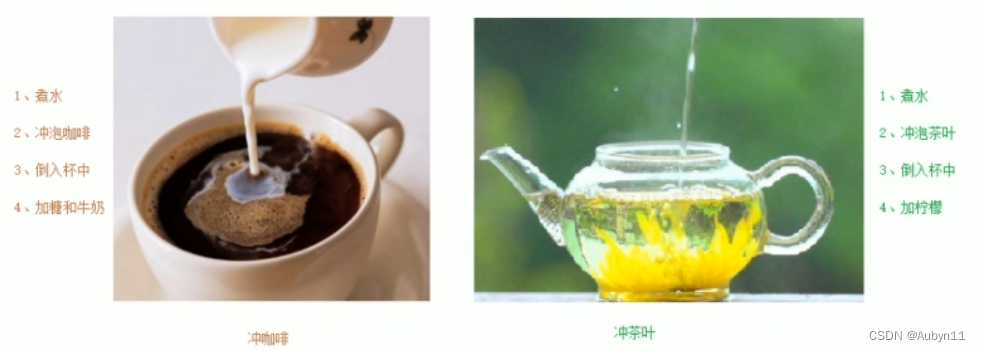
示例:
#include<iostream>;
using namespace std;
class AbstractDrinking {
public:
virtual void Boil() = 0;
virtual void Brew() = 0;
virtual void PourInCup() = 0;
virtual void PutSomething() = 0;
void makeDrink() {
Boil();
Brew();
PourInCup();
PutSomething();
}
};
class Coffee : public AbstractDrinking {
public:
virtual void Boil() {
cout << "煮水" << endl;
}
virtual void Brew() {
cout << "冲咖啡" << endl;
}
virtual void PourInCup() {
cout << "倒咖啡" << endl;
}
virtual void PutSomething() {
cout << "加糖" << endl;
}
};
class Tea : public AbstractDrinking {
public:
virtual void Boil() {
cout << "煮矿泉水" << endl;
}
virtual void Brew() {
cout << "冲茶叶" << endl;
}
virtual void PourInCup() {
cout << "倒茶叶" << endl;
}
virtual void PutSomething() {
cout << "加枸杞" << endl;
}
};
void doWork(AbstractDrinking* a) {
a->makeDrink();
delete a;
}
void test01() {
doWork(new Coffee);
doWork(new Tea);
}
int main() {
test01();
return 0;
}
虚析构和纯虚析构
多态使用时,如果子类中有属性开辟到堆区,那么父类指针在释放时无法调用到子类的析构代码
解决方式:
将父类中的析构函数改为虚析构或者纯虚析构
虚析构和纯虚析构共性:
可以解决父类指针释放子类对象
都需要有具体的函数实现
虚析构和纯虚析构区别:
如果是纯虚析构,该类属于抽象类,无法实例化对象
虚析构语法:virtual ~类名(){}
纯虚析构语法:virtual ~类名(){} = 0;
类名::~类名(){}
虚析构或纯虚析构就是用来解决通过父类指针释放子类对象
如果子类中没有堆区数据,可以不写为虚析构或者纯虚析构
拥有纯虚析构函数的类也属于抽象类
示例:
#include<iostream>;
#include<string>;
using namespace std;
class Animal {
public:
Animal() {
cout << "Animal构造函数" << endl;
}
//利用虚析构可以解决 父类指针释放子类对象时不干净的问题
//virtual ~Animal() {
// cout << "Animal析构函数" << endl;
//}
//纯虚析构
//需要声明也需要实现
//有了纯虚析构之后,这个类也属于抽象类,无法实例化对象
virtual ~Animal() = 0;
virtual void speak() = 0;
};
Animal :: ~Animal() {
cout << "Animal纯虚析构" << endl;
}
class Cat : public Animal {
public:
Cat(string name) {
cout << "Cat构造" << endl;
m_name = new string(name);
}
~Cat() {
if (m_name != NULL) {
cout << "Cat析构" << endl;
delete m_name;
m_name = NULL;
}
}
virtual void speak() {
cout << *m_name << "猫叫" << endl;
}
string* m_name;
};
void test01() {
Animal* a = new Cat("Tom");
a->speak();
//父类指针在析构的时候 不会调用子类中析构函数 导致子类中如果有堆区属性 出现内存泄漏
delete a;
}
int main() {
test01();
return 0;
}
多态案例三-电脑组装
案例描述:
电脑主要组成部件为CPU(用于计算),显卡(用于显示),内存条(用于存储)
将每个零件封装出抽象基类,并且提供不同的厂商生产不同的零件,例如Inter厂商和Lenovo厂商
创建电脑类提供让电脑工作的函数,并且调用每个零件工作的接口
测试时组装三台不同的电脑进行工作
示例:
#include<iostream>;
using namespace std;
class Cpu {
public:
virtual void calculate() = 0;
};
class VideoCard {
public:
virtual void display() = 0;
};
class Memory {
public:
virtual void storage() = 0;
};
class Computer {
public:
Computer(Cpu* m_Cpu, VideoCard* m_vc, Memory* m_mem) {
cpu = m_Cpu;
vc = m_vc;
mem = m_mem;
}
void work() {
cpu->calculate();
vc->display();
mem->storage();
}
~Computer() {
if (cpu != NULL) {
delete cpu;
cpu = NULL;
}
if (vc != NULL) {
delete vc;
vc = NULL;
}
if (mem != NULL) {
delete mem;
mem = NULL;
}
}
private:
Cpu* cpu;
VideoCard* vc;
Memory* mem;
};
class InterCPU : public Cpu {
virtual void calculate() {
cout << "Inter Cpu" << endl;
}
};
class InterVideoCard : public VideoCard {
virtual void display() {
cout << "Inter VideoCard" << endl;
}
};
class InterMemory : public Memory {
virtual void storage() {
cout << "Inter Memory" << endl;
}
};
class LenovoCPU : public Cpu {
virtual void calculate() {
cout << "Lenovo Cpu" << endl;
}
};
class LenovoVideoCard : public VideoCard {
virtual void display() {
cout << "Lenovo VideoCard" << endl;
}
};
class LenovoMemory : public Memory {
virtual void storage() {
cout << "Lenovo Memory" << endl;
}
};
void test01() {
Cpu* inter = new InterCPU;
VideoCard* card = new InterVideoCard;
Memory* mem = new InterMemory;
Computer* c1 = new Computer(inter, card, mem);
c1->work();
delete c1;
Computer* c2 = new Computer(new LenovoCPU, new LenovoVideoCard, new LenovoMemory);
c2->work();
delete c2;
}
int main() {
test01();
return 0;
}
文件操作
程序运行时产生的数据都属于临时数据,程序一旦运行结束都会被释放
通过文件可以将数据持久化
C++中对文件操作需要包含头文件<fstream>
文件类型分为两种
文本文件:文件以文本的ASCII码形式存储在计算机中
二进制文件:文件以文本的二进制形式存储在计算机中,用户一般不能直接读懂它们
操作文件的三大类
ofstream:写操作
ifstream:读操作
fstream:读写操作
文本文件
写文件
写文件步骤如下:
包含头文件 #include <fstream>
创建流对象 ofstream ofs;
打开文件 ofs.open(“文件路径”,打开方式);
写数据 ofs << “写入的数据”;
关闭文件 ofs.close();
文件打开方式
| 打开方式 | 解释 |
|---|---|
| ios::in | 为读文件而打开文件 |
| ios::out | 为写文件而打开文件 |
| ios::state | 初始位置:文件尾 |
| ios::app | 追加方式写文件 |
| ios::trunc | 如果文件存在先删除,再创建 |
| ios::binary | 二进制方式 |
注意:文件打开方式可以配合使用,利用|操作符
例如:用二进制方式写文件 ios::binary | ios::out
示例:
#include <iostream>;
#include <fstream>;
using namespace std;
void test01() {
ofstream ofs;
ofs.open("test.txt", ios::out);
ofs << "姓名:张三" << endl;
ofs << "性别:男" << endl;
ofs << "年龄:18" << endl;
ofs.close();
}
int main() {
test01();
return 0;
}
读文件
读文件与写文件步骤相似,但是读取方式相对较多
读文件步骤如下:
包含头文件 #include <fstream>
创建流对象 ifstream ifs;
打开文件并判断文件是否打开成功 ifs.open(“文件路径”,打开方式);
读数据 四种方式读取
关闭文件 ifs.close();
示例:
#include<iostream>;
#include<fstream>;
#include<string>;
using namespace std;
void test01() {
ifstream ifs;
ifs.open("test.txt", ios::in);
if (!ifs.is_open()) {
cout << "打开失败" << endl;
return;
}
//第一种读取方法
/*char buffer[1024] = { 0 };
while (ifs >> buffer) {
cout << buffer << endl;
}*/
//第二种读取方法
/*char buffer[1024] = { 0 };
while (ifs.getline(buffer, sizeof(buffer))) {
cout << buffer << endl;
}*/
//第三种读取方法
string buffer;
while (getline(ifs, buffer)) {
cout << buffer << endl;
}
//第四种读取方法(不常用)
/*char c;
while ((c = ifs.get()) != EOF) {
cout << c << endl;
}*/
ifs.close();
}
int main() {
test01();
return 0;
}
二进制文件
以二进制的方式对文件进行读写操作
打开方式要指定ios::binary
写文件
二进制方式写文件主要利用流对象调用成员函数write
函数原型:ostream& write(const char * buffer,int len);
参数解释:字符指针buffer指向内存中一段存储空间,len是读写的字节数
示例:
#include<iostream>
#include<fstream>
using namespace std;
class Person {
public:
char m_Name[64];
int m_Age;
};
void test01() {
ofstream ofs;
ofs.open("person.txt", ios::out | ios::binary);
Person p = { "张三",18 };
ofs.write((const char*)&p, sizeof(Person));
ofs.close();
}
int main() {
test01();
return 0;
}
读文件
二进制方式读文件主要利用流对象调用成员函数read
函数原型:istream& read(char*buffer,int len);
参数解释:字符指针buffer指向内存中一段存储空间,len是读写的字节数
示例:
#include<iostream>
#include<fstream>
using namespace std;
class Person {
public:
char m_Name[64];
int m_Age;
};
void test01() {
ifstream ifs;
ifs.open("person.txt", ios::in | ios::binary);
if (!ifs.is_open()) {
cout << "打开失败" << endl;
return;
}
Person p;
ifs.read((char*)&p, sizeof(Person));
cout << p.m_Name << endl;
cout << p.m_Age << endl;
ifs.close();
}
int main() {
test01();
return 0;
) {
cout << buffer << endl;
}*/
//第三种读取方法
string buffer;
while (getline(ifs, buffer)) {
cout << buffer << endl;
}
//第四种读取方法(不常用)
/*char c;
while ((c = ifs.get()) != EOF) {
cout << c << endl;
}*/
ifs.close();
}
int main() {
test01();
return 0;
}
二进制文件
以二进制的方式对文件进行读写操作
打开方式要指定ios::binary
写文件
二进制方式写文件主要利用流对象调用成员函数write
函数原型:ostream& write(const char * buffer,int len);
参数解释:字符指针buffer指向内存中一段存储空间,len是读写的字节数
示例:
#include<iostream>
#include<fstream>
using namespace std;
class Person {
public:
char m_Name[64];
int m_Age;
};
void test01() {
ofstream ofs;
ofs.open("person.txt", ios::out | ios::binary);
Person p = { "张三",18 };
ofs.write((const char*)&p, sizeof(Person));
ofs.close();
}
int main() {
test01();
return 0;
}
读文件
二进制方式读文件主要利用流对象调用成员函数read
函数原型:istream& read(char*buffer,int len);
参数解释:字符指针buffer指向内存中一段存储空间,len是读写的字节数
示例:
#include<iostream>
#include<fstream>
using namespace std;
class Person {
public:
char m_Name[64];
int m_Age;
};
void test01() {
ifstream ifs;
ifs.open("person.txt", ios::in | ios::binary);
if (!ifs.is_open()) {
cout << "打开失败" << endl;
return;
}
Person p;
ifs.read((char*)&p, sizeof(Person));
cout << p.m_Name << endl;
cout << p.m_Age << endl;
ifs.close();
}
int main() {
test01();
return 0;
}
